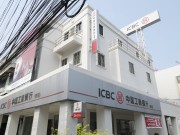7 Popular Revenue Models
How Do You Charge Your Fees? Do you charge by per transaction or by annual management fee? Which is better? Which is more popular? Which gives you a more sustainable revenue business model?
Are these the only ways to charge your fees? We review 6 different ways you can charge your financial fees:
No. 1 Transactional Fee
The most commonly-used revenue model in the financial industry. It is straightforward – pay for each buy or sell transaction. If you transact in bigger quantum, you will be able to get preferential transactional fees.
Transactional fee model is prevalent especially in brokerages where large volume of buying and selling activities are transacted a day.
Transactional Fees: 0.05% to 1% for common financial instruments such as stocks & bonds. For Managed Funds, the fees can range from 0.5% to as high as 5%.
Financial Products: Stocks, Bonds, Managed Funds, Unit Trust, Mutual Funds, Exchange Traded Funds, Options, Futures, Structured Products
No. 2 Spreads

Spread is the most traditional revenue strategy, akin to trading businesses, in the olden days. The difference between the buy and sell price is known as the spread. (Buy and Sell is also quoted as Bid and Offer)
Example:
- Sell Price $1.00
- Buy Price $1.03
Spreads: Spreads directly reflect the buying and selling demand in the market. The volume of buy and sell orders that are queuing at different prices allow the market (buyers and sellers) to buy and sell at the market prices.
Products such as foreign exchange, interest rates, forwards and swaps trade mainly based on spreads without additional transaction fees while products such as stocks and bonds have a spread difference and also incur transaction fees, typically by brokerages and clearing houses.
In situations where buying or selling demand are low, the spreads would likely widen. With the above example, the sell-price might be $0.95 and buy-price might be $1.05. The spreads can also be seen as the actual cost of transaction. For example: If you buy at $1.05, and immediately re-sell in the market, you will receive $0.95, assuming there is no change in price.
Financial Institutions, Market-Makers or Traders can also profit from spreads, by accumulating large holdings or selling in advance as they may have access to market data & forecasts on buying and selling demand.
Financial Products: Foreign Exchange, Gold Interest Rates, Forwards, Swaps, Futures, Commodities, Structured Products
No. 3 Annual Management Fee

Annual Management fees are a preferred business model as they provide predictable revenue flow as opposed to transactional fees that can fluctuate widely especially in the equity market that affects brokerages severely during thin-trading periods or in a recession.
Annual Management Fee: Make popular by the fund management and asset management industry which typically charges 1% to 2% annually for professional funds or asset management services.
Most Unit Trust or Mutual Funds charge an annual management fee between 0.75% to 2.5% while Exchange-Traded Funds charge from 0.1% onwards.
The Annual Management fees may include or exclude the standard transactional fees and spreads that arises from buying and selling financial instruments. Due to the sheer volume of transactions, also known as institutional business, the transactional fees and spreads are much lower than for retail businesses.
Trust companies and increasing number of Banks, Private Banks have focused on using Annual Management fee as a revenue business model.
Financial Products: Managed Funds, Unit Trust, Mutual Funds, Exchange-Traded Funds, Discretionary Portfolio, Selected Private Banking Accounts, Listed Trusts such as REITs
No. 4 In-Built Fee

Insurance businesses are the largest adopter of in-built fees revenue strategy. With most consumers being unfamiliar with financial matters such as insurance, savings and investments, it is much easier to build a single integrated product such as endowment or whole-life policies that most consumers would have encountered and purchased today.
In-Built Fees: Rather than getting consumers or businesses to pay for each risk to undertake, risks are usually aggregated into a package at a price / premium that commensurates with the target market group such as lower-income, middle-income, mass market, affluent, high net-worth or businesses.
This large inflow of premiums or sales revenue allow insurance businesses to manage and predict long-term cashflow, therefore allowing sustainable investment policies, which in turn policy-holders such as consumers or business owners can share the investment returns that can also offset the cost of the insurance.
The in-built fees allow insurance companies to adjust the insurance premiums and investment payouts according to real market conditions, sharing the profits alongside the growth of the economy.
Other than insurance companies, professionally managed funds such as Unit Trust also have in-built fees, albeit to a lesser extent. For example, the underlying investments are usually custodized under an independent custodian to hold, aggregate and protect the investors. The services of trustee, accountants and law firms are also used to create a strong, sustainable and trusted investment management structure.
Financial Products: Endowment, Whole-life Policies, Universal Life, Mutual Funds, Unit Trust, Managed Funds, Trust
No. 5 Advisory Fee

An advisory-fee model increases the value-added services of the financial transaction or solution. Instead of charging based upon transactions, spreads, annual management fees or in-built fees, the advisory fee is proposed and charged based on the advice and solutions required.
This is increasingly common for highly specialized financial solutions and high value transactions. For example, for a ultra high-networth client with family and business assets of $100 million, the client may seek to maximise value in the assets while minimizing business risks such as legal, tax or administrative matters and personal risks such as being the key decision maker, family disputes, capability in managing assets and succession planning. Would there also be business assets for diversification?
As wealth grew tremendously in Asia, many families (HNW & UHNW) require sustainable, valuable, specialised or ad-hoc advice, bringing the rise in advisory-fee model.
Financial Products: International Asset & Wealth Structuring, Trust & Foundation, Customised Investments, Discretionary Portfolio, Capital Market Advisory, Investment Advisory
No. 6 Profit-Sharing

Hurdle Rate, High Watermark, Retainer and Success Fee … … these terms are synonymous with Managed Funds, Hedge Funds and Private Equity.
Profit-sharing allows for not only the co-sharing of profits but co-sharing of investment risks – a strong statement of intent of the financial decisions.
Family Offices, Boutique Advisory and Private Wealth Management firms also used these models successfully to create a longer-term partnership, forging trust, and exchange of financial deal-flows and insights.
With the focus on optimal structuring and outcome, both clients and advisory providers have common goal and vested interest to decrease cost and increase profitability.
Financial Products: Structured Products, Hedge Funds, Managed Investments, Private Investments, Private Equity
No. 7 Miscellaneous Fees

Miscellaneous fees such as annual fees or setup fees are also popular revenue models. Although the fees are a fraction of the core revenue stream, being able to cover the cost of operations while sensibly able to charge these fees to clients make this revenue stream easy to operate and manage – perhaps also the reason why they are easily waived.
Example: Annual Private Banking Fees, Fall-Below Fees, Annual Account Fee, Bank Account Setup Fees, Financial Institution Account Opening Fee, Custodian Fees
These are the 7 popular fee models. Are there more fees and revenue models you can think of?
Sign Up / Register
Caproasia Users
- Manage $20 million to $3 billion of assets
- Invest $3 million to $300 million
- Advise institutions, billionaires, UHNWs & HNWs
Caproasia Platforms | 11,000 Investors & Advisors
- Caproasia.com
- Caproasia Access
- Caproasia Events
- The Financial Centre | Find Services
- Membership
- Family Office Circle
- Professional Investor Circle
- Investor Relations Network
Monthly Roundtable & Networking
Family Office Programs
The 2025 Investment Day
- March - Hong Kong
- March - Singapore
- July - Hong Kong
- July - Singapore
- Sept- Hong Kong
- Sept - Singapore
- Oct- Hong Kong
- Nov - Singapore
- Visit: The Investment Day | Register: Click here
Caproasia Summits
- The Institutional Investor Summit
- The Investment / Alternatives Summit
- The Private Wealth Summit
- The Family Office Summit
- The CEO & Entrepreneur Summit
- The Capital Markets Summit
- The ESG / Sustainable Investment Summit







































